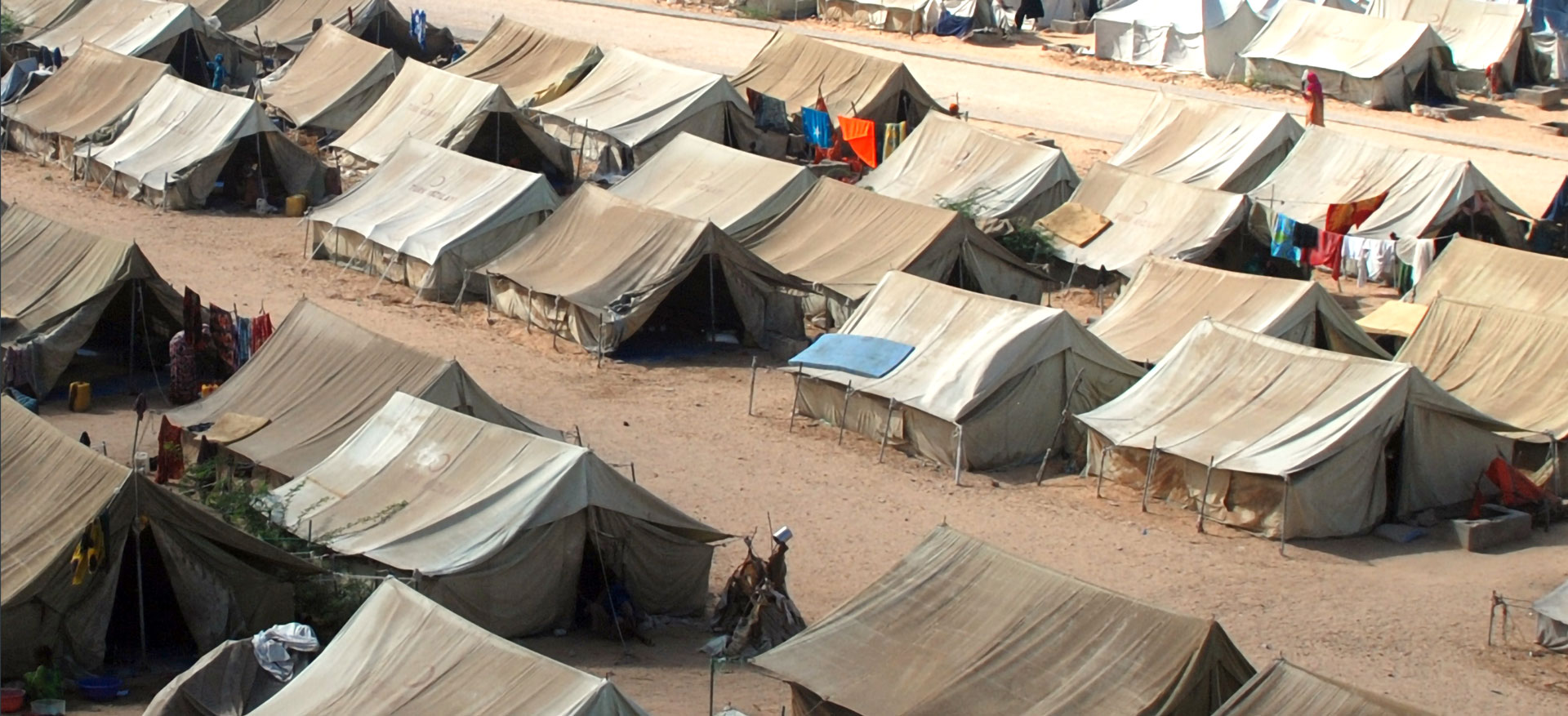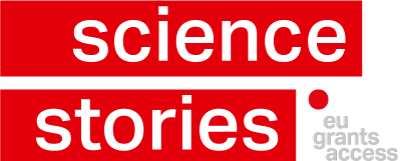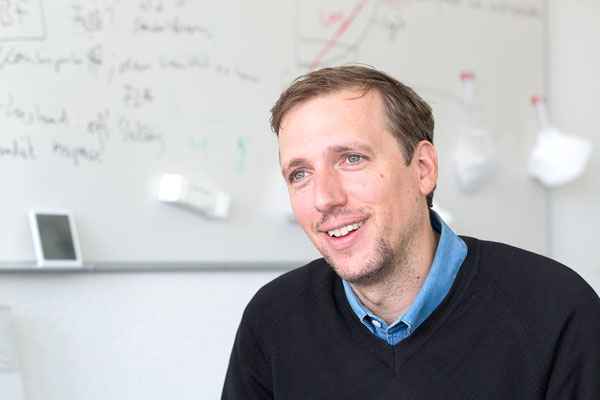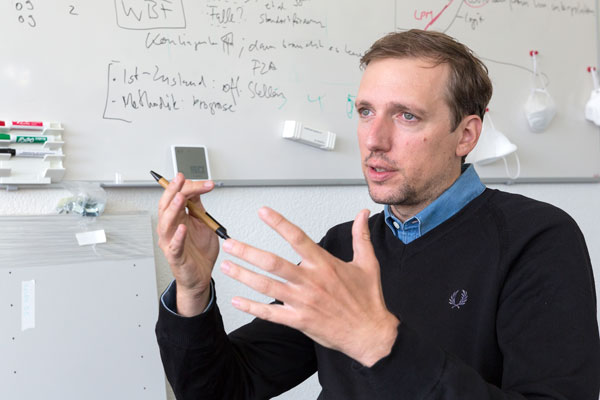
Redesigning asylum processes
How do asylum policies affect the subsequent integration of refugees and how to design an asylum process to promote integration? Dominik Hangartner, Professor of Public Policy at ETH Zurich, uses an ERC project to find practicable solutions. Rolf Probala met him for an interview.
Dominik Hangartner, what distinguishes your project from the many studies on asylum processes and integration of refugees that already exist?
What sets our project apart from other works is its quantitative approach based on data. Whenever possible, we base our analysis on register data that provide us with information about the entirety of a country’s asylum procedures; where did the asylum seekers come from, who has found what type of job and so on. This register data and additional data sources are the empirical foundation of our analyses that we then conduct using recent advances in statistics.
What exactly are register data?
In our context, register data are often information that accumulates and is recorded as process data throughout the asylum processes at a country’s ministries and authorities. Switzerland is one of the lucky cases for us. Here, the State Secretariat for Migration systematically collects information about every refugee throughout the course of the asylum procedure. This data can be linked to the data of the Old Age and Survivor’s Compensation (AHV) offices.
What sets our project
apart from other works
is its quantitative approach
based on data.
With this, we are able to reconstruct the refugees’ salaries. Hence, we not only have information about the personal characteristics of individual refugees and the asylum policy measures they are exposed to. We also have data about whether the refugees have found work and how much they earn. In addition, there is the data provided by the local residential registry offices with information on refugees’ place of residence and relocation. Connecting all of these data must be conducted in such a way that the anonymity of the people concerned is ensured. This is why we do not link them ourselves but leave it to the Federal Statistical Office. We therefore never know whether the person is Achmed X or Hana Y whose data we receive with an anonymised number.
Among the five countries* in which you are conducting your ERC-sponsored research, Switzerland is the ideal case. What about the other countries?
The situation is a bit more difficult in France. The data is only available in paper form. It is usually a dossier and a page is added annually with new data. In order to make this information available for our research, one of our colleagues has settled in the basement of the responsible ministry in Paris to digitise the data. Fortunately, we were able to convince the French Government that it is also for its own benefit that we prepare the data and make them accessible in anonymised form for our research.
You assess these data with novel statistical methods. What is your approach?
We do not want to simply calculate some correlations. We aim to execute so-called counterfactual analyses in order to deliver quantitative statements about the effects of asylum policy measures on the subsequent integration. Here is an example: in most countries, asylum seekers are not allowed to work during a certain period of time.
We not only evaluate
what already exists
but also design
innovative policies.
What we are trying to estimate is how much higher the employment rate of a refugee would be five years after his arrival if he would have been allowed to work already after three months instead of six. Fortunately, statistical and economic methods were developed during the past years that enable this kind of analyses with observation data. We merely have to adapt them to our specific problem statements. This year, three economists received the Nobel Prize in Economic Sciences for the development of these novel methods.
And statistical models deliver the results of your analyses?
Exactly. By means of statistical methods for causal inference we can derive estimates such as: if you block refugees’access to the labour market for six months, this will have a specific effect on their integration. If you block access for three months, the effect will be different. This contrafactual policy evaluation is also of great importance for political decision-makers.
This sounds very much like applied research.
It is applied research. But I do hope that nevertheless we manage to establish a bridge between applied and basic research. 50 years ago, the sociologist Robert K. Merton said that sociology – and I think the same is true for political science and economics – did not yet have its Einstein because it also did not have its Kepler. What he meant was that an empirical foundation is needed first in order to build the grand theories on top of it. I am certainly not a Merton or a Kepler but I believe that with the many data available to us today we have much better evidence from which we can gain inspiration for the theory development.
How did you organise your team?
The people working with the data have to be specialists in statistics and econometrics. We have four postdocs in our team consisting of 15 people. However, the special aspect of our ERC project is that running parallel to the research we are beginning to translate the scientific findings into applicable policy measures and instruments. Hence, we not only evaluate what already exists but also design innovative policies. This is done in close collaboration with the ministries and authorities of our five partner countries. To this end, we have two experienced project managers in our team.
We can see that
entering the working world
at a late stage has
unfavourable medium
to long-term effects
on integration.
They speak the language of administrations and international organisations and have, in part, also been working in this world. The main task is to translate our research results into the language of our partner institutions and stakeholders, and vice versa. There is a translational function in the original meaning of the word which is essential for our type of «translational social science».
Where do you locate the greatest challenges in your project?
The main challenges are that we have to understand in great detail how the data have come about that are generated by the specific asylum processes of each country. This means that we spend a lot of time talking to the people conducting these asylum procedures in order to find out how they work. This is the only way to retrace how the data have been generated and whether they have any blind spots; they are «by-products», so to speak, of administrative decisions and were not collected for our research. The world that we see through these data is the world of ministries and authorities.
What is your concrete approach?
I frequently talk to a member of staff of our partners on the phone or via video conferencing about how they conduct their work or I use Zoom to observe employees of ministries we work with during a meeting and how they arrive at certain decisions during a process. I am basically watching them at work. One of the advantages of this approach is that once we understand the processes, we are then able to design the tools in such a way that they can be easily integrated into existing work processes of authorities and officials.
The project stands at half-time. Can you already make any statements at this point?
One of our work’s aspects that we have mostly concluded is the question about the effects of labour market access for refugees. We can see that entering the working world at a late stage has unfavourable medium to long-term effects on integration. However, time is only one factor. Another one is the geographical allocation. In receiving countries, this allocation is usually executed at random. We assessed whether this allocation could be optimised based on data with a view to integration. Our objective was to predict, based on data collected during the asylum process, in which canton of Switzerland a newly arrived family of refugees would be most likely to find work. Already in 2018, we published a proof of concept paper in «Science» in which we demonstrated how this could be achieved based on register data.
It is one of the constants
of mankind that people
move to places
that offer better chances
for them and their
families.
Currently, in collaboration with the State Secretariat for Migration, we are conducting a large randomised control study in Switzerland with 2,000 refugee families, in which 1,000 of them are allocated to cantons at random as before and the other half is supported by our data-based recommendations.
Do the authorities receive a manual?
Among other things, we provide the officials with a tailored software that predicts which canton, based on the individual data of the refugees, is most promising for this particular family regarding their labour market integration.
Once the project is completed, what will be the results?
I hope that we will have a better understanding of the most important components of the asylum process and the consequences thereof on integration. Additionally, I hope to have gathered data-driven evidence for many of these components on how the integration of those refugees who are eventually allowed to stay can be promoted already during the asylum process.
Millions are on their way. What are your predictions regarding the development of migration in the years to come?
It is one of the constants of mankind that people move to places that offer better chances for them and their families. Migration has always been the main strategy to prevent or reduce poverty and it looks unlikely that this is going to change in the future. This is why we urgently need more knowledge about how we can successfully promote integration.
* France, Germany, the Netherlands, Sweden, Switzerland
Interview with Dominik Hangartner (in german)
Dominik Hangartner
Dominik Hangartner studied Economics and Sociology at the University of Bern, Switzerland, from 2000 to 2006. After pre-doctoral fellowships at Harvard University, Washington University in Saint Louis, and the University of California, Berkeley, USA, he received his PhD in Social Science from the University of Bern in 2011. In the same year, he joined the London School of Economics, UK, as Assistant Professor and was promoted to Associate Professor in 2013. In 2017, he was appointed Associate Professor at ETH Zurich and promoted to Full Professor of Public Policy at the end of 2000. Dominik Hangartner's research uses field work and statistics to evaluate and design migration and integration policies.
In 2019, he received the National Prize Latsis for his research. This award honours researchers up to the age of 40 for outstanding achievements in basic science.
Horizon 2020 project
INTEGRATE: Identifying the Impact of Asylum Polices on Refugee Integration and Political Backlash in Host Communities
- Programme: ERC Starting Grant
- Duration: 1. november 2018 – 31. october 2023 (60 months)
- Contribution for ETH Zurich: 1’486’730 €





